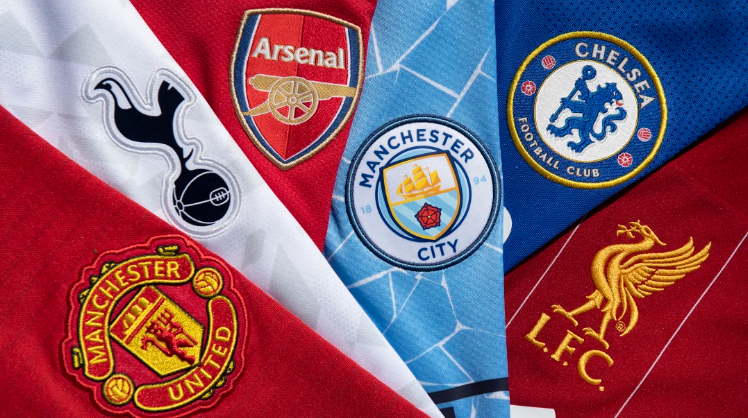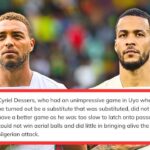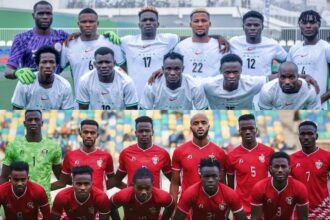The English Premier League has largely been shaped around a familiar hierarchy: The Big Six—Manchester United, Liverpool, Arsenal, Chelsea, and Tottenham Hotspur. These clubs have not only dominated the top spots in English Football but have also monopolised European slots, the biggest sponsorship deals, and media attention. Many clubs in recent years have posed a threat to the Big Six monopoly. Some have failed, some unsustainable success.
The Big Six have somehow managed to prove immovable but with the 2025/2026 English Premier League season underway, the winds of disruption are gathering pace. Three clubs in particular—Aston Villa, Brighton & Hove Albion, and Newcastle United
have shown that the Big Six monopoly is not unbreakable.
With ambitious ownership, savvy coaching, and tactical evolution, these rising contenders are threatening to redraw the Premier League’s power map. The question is who amongst them is best equipped to break the cartel?
The “Big Six” emerged in the early 2010s to designate England’s financially and institutionally powerful clubs. Between 2010 and 2024, the Big Six accounted for 85% of all top-four finishes, owing to more commercial income, multinational fanbases, and large squads. Their supremacy frequently felt structural, as if it were the outcome of power rather than form.
Although there have been brief interruptions to the “hierarchy”—Leicester City’s 2015/16 title winning season, Newcastle United securing top 4 in 2022/23 season whilst Liverpool and Chelsea who are prominent members of the Big Six finish 6th and 12th respectively, and Aston Villa getting Champions League in 2023/24 seeing the biggest club in England, Manchester United finish 8th.
The monopoly may not have been broken yet, but the foundations are starting to shake. Breaking the Big Six maybe interpreted in various ways. Could be consistent Top 4 finishes, regularly qualifying for Europe or even outperforming or outcompeting traditional giants over a sustained period.
For the purpose of this article, breaking the monopoly is defined as regular European qualification or displacing the Big Six clubs in the top six across multiple seasons. To achieve this, the clubs need elite-level coaching, squad depth and quality, strong recruitment strategies, financial muscle within FFP, and tactical consistency as these are the factors behind the long term dominance of the traditional Big Six.
Now let’s assess how Aston Villa, Brighton and Hove Albion, and Newcastle stack.
UNAI EMERY’S ASTON VILLA
Unai Emery’s arrival at Villa Park in late 2022 triggered a complete transformation. His emphasis on defensive compactness, smart pressing and quick counters turned Villa into one of Europe’s most interesting team to watch in recent times and also a very difficult team to breakdown. His European pedigree with 4 Europa League titles brought belief and clarity. In the 2023/24 season, Villa finished above Big Six teams like Spurs, Chelsea, and even Liverpool at some point. Villa’s squad is mature and balanced with Ollie Watkins has developing into one of the league’s most complete strikers.
Boubacar Kamara provide a midfield steel and guile. Pau Torres and Ezri Konsa anchor a reliable backline. Summer additions such as Alvaro Fernandez provide further depth. Villa involvement in the 2025/26 Champions League campaign will test their resilience. Unlike Newcastle and Brighton, Emery is vast in managing squad rotation across Europe and domestic Leagues. The NSWE ownership have invested heavily but strategically. There’s been no financial recklessness—just smart spending backed by a sustainable long-term plan including stadium redevelopment and enhanced academy facilities.
BRIGHTON
Brighton and Hove Albion are arguably the best run club in England. They have made massive profits from the sale of Caicedo, Alexis Mac Allister, and Cucurella yet their replacements—Carlos Baleba, Simon Adingra fit seamlessly into the system. Though they remain vulnerable to losing stars but their recruitment conveyer belt is elite. Europa League participation in 2023/24 stretched the squad, leading to a slump in domestic form. While Brighton now have the infrastructure to handle multiple competitions, they still lack the depth to fully balance the two without fatigue and form dips.
Though the inexperience of the head coach, Fabian Hürzeler may come to play once in a while, his tactical adequacies is always there save the day. While a 4-4-2 base is common, Hürzeler deftly shifts into formations such as 4-2‐3‐1, 3‐3‐4, or even 5‐3‐2 depending on the opposition and match flow. He tailors his setup to the players available and the opposition’s style, enabling Brighton to adapt mid-game seamlessly. Their absence from Europe next season could help in managing the squad in terms of injury and fatigue which could result them to playing one match a week as opposed to the Big Six who are going to be heavily involved in European tournaments.
NEWCASTLE UNITED
Eddie Howe has proven to be more than a transition manager. His tactics—high pressing, fast counter-attacks, and discipline in defence, have turned Newcastle into a serious European-level side. Despite a UCL group stage exit in 2023/24, the experience has only made them stronger heading into 2025/26. Since the Public Investment Fund (PIF) takeover in 2021, Newcastle have had financial clout—but they’ve used it wisely.
Big names like Alexander Isak and Bruno Guimarães were signed, but always within a sustainable FFP strategy. Their new training facilities and youth academy revamp show a clear long-term vision. The 2023/24 Champions League campaign highlighted the need for depth. Injuries exposed their thin bench, but the club has responded with depth-boosting signings in the 2024/25 and 2025 summer windows. Also, St. James’ Park—one of the scariest away stadiums in the Premier League has returned to being a fortress. The fanbase, combined with historical hunger and city-wide support, gives Newcastle a unique emotional advantage. Despite the potential of the three clubs, they face shared challenges such as injuries to key players due to thin squads, consistency against lower-table clubs, player poaching by the Big Six or foreign clubs, struggles to balance both European and Domestic demands, maintaining identity despite rising
expectations.
In terms of short-term potential, Aston Villa appear the most prepared to break the Big Six monopoly again. With Unai Emery’s elite coaching, a deep and balanced squad, and no off-field turmoil, they are set to push on in 2025/26. Newcastle have the strongest long-term prospects due to financial strength, infrastructure upgrades, and a growing fan-driven momentum. If injuries can be controlled, they could finish top four again. Brighton, while brilliant and admirable, might need another year or two of consolidation.
Their reliance on a lean squad and their vulnerability to losing key players may limit their top-four ceiling—though they will remain one of the league’s most admired teams. The Premier League may soon be forced to redefine its elite. The “Big Six” may still rule today, but Villa,
Newcastle, and Brighton are no longer just knocking, they’re forcing the door open.















